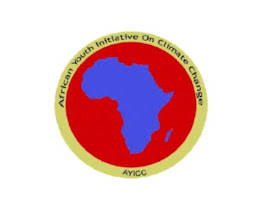Part 6: Where is the Money?
In the previous post, we discussed how the Global Environment Facility (GEF) works. In
this post, we will look at the special Funds which have been established to
address the effects of climate change, with some of them being managed by the
GEF; this post will also be fairly short. The Funds we are going to discuss
are:
·
Special Climate Change Fund
(SCCF)
·
Least Developed Countries Fund
(LDCF)
·
Adaptation Fund
·
Green Climate Fund (GCF)
1.
Special Climate Change Fund (SCCF)
The Climate Change Convention established the SCCF in 2001, and its
main task was to finance projects relating to adaptation, industry, agriculture, forestry,
waste management, technology transfer and capacity building, energy, economic
diversification and transport.
This was quite an extensive mandate, and the GEF was tasked with
managing this Fund. For a start, the GEF Council established a programming document
that actually laid out the operational basis for funding under the SCCF. During
COP17 in Durban, South Africa, the GEF was tasked with clarifying the concept
of additional funds to the SCCF, as well as to raise awareness on the need for
donor countries to provide adequate resources to make this Fund functional,
especially in supporting projects initiated by country Parties.
2.
Least Developed Countries Fund (LDCF)
This Fund is also managed by the GEF, and this mandate was provided
for in COP7. The main aim of establishing this Fund was to assist least
developed countries to implement their National Adaptation Programmes of Action (NAPA). Thereafter, at COP11, the
provisions that would see the full-cost funding and co-financing if this Fund
were agreed upon by Parties.
At COP17, the GEF was directed to make clear project baselines as
well as how Parties can prepare applications for funding for the NAPAs. But then,
it is important to note that there were other elements in the LDC work
programme other than NAPAs. In this regard, the Least Developed Countries
Expert Group (LEG) was given the task of specifying these aspects of this
Fund to the COP; this would in
turn enable the COP to advice the GEF on how to proceed.
During COP18 in Doha, Qatar, UN agencies, GEF and other
international organizations will have the opportunity to provide information on
how they can establish further support for the other LDC work programme
elements, apart from NAPA.
3.
Adaptation Fund
The Adaptation Fund was established to finance concrete projects of
developing countries which are Parties to the Kyoto Protocol, and which are most vulnerable to climate change. A share of Clean Development Mechanism (CDM)
proceeds finances this Fund, as well as finances from other sources. The
Adaptation Fund Board (AFB) manages and supervises this Fund. Thie AFB meets at least twice a year,
and it has 16 members.
The World Bank is the trustee of the Adaptation Fund, but this is on
an interim basis. Parties invited the GEF to provide secretariat services to
the Adaptation Fund Board, also on an interim basis. In 2011, a review on the aforementioned interim arrangements
began, and the AFB finally submitted it to COP17.
The Subsidiary Body for Implementation (SBI) provides advice to the
COP on all matters; thus, the SBI was tasked with coming up with a draft decision
that would be presented to COP18 for adoption.
4.
Green Climate Fund (GCF)
The GCF was established during COP16 in Cancun, Mexico, as an
operating entity of the financial mechanism. The Global Climate Fund Board was
appointed to govern this Fund. The main aim of establishing the GCF was to
support projects, programmes, policies and other activities in developing
country Parties.
The World Bank was also appointed as the interim trustee of the
Global Climate Fund. This arrangement
was however subject to review three years after the operationalization of the
Green Climate Fund.
A Transitional Committee (TC) was also formed at COP16 and given the
mandate of designing the Green Climate Fund. The membership of this committee is
drawn from 40 members (15 from developed countries and 25 from developing countries). At COP17 in Durban, South Africa, the TC had come up with a governing
instrument for GCF; the COP then adopted it. The UNFCCC secretariat and the GEF secretariat were also
required to set up an interim secretariat until an independent secretariat of
the GCF is established.
At COP18 in Doha, Qatar, the arrangements between the COP and GCF
will be finalized so that there is greater transparency and accountability on
the activities of the latter; also, the COP is tasked with providing guidance to
the GCF Board. The host country of the GCF will be decided at COP18, as well as
the GCF Board Members.
Tasks of the GCF Board:
·
To expedite the
operationalization of the GCF
·
To select the trustee of the GCF
through a transparent and competitive bidding process
·
To provide annual reports of
its activities to the COP
Conclusion
This marks the
end of this post, although it is laden with plenty of details; but then, it is
prudent that you understand how these Funds work so that you can wrap your head
around the politics involved in running them. The next post will delve into the
structure of the COP so that you will have a thorough understanding of its
inner workings. See you then!
Compiled by: Reuben Makomere and Kennedy Liti Mbeva
PS: As usual, if you are interested in contributing to this COP series, please send an email to mbevakl@gmail.com and I will be glad to have you on board!
Useful links used in this research:
- Special Climate Change Fund: http://unfccc.int/cooperation_and_support/financial_mechanism/special_climate_change_fund/items/3657.php
- Green Climate Fund: http://unfccc.int/cooperation_and_support/financial_mechanism/green_climate_fund/items/5869.php
- Least Developed Countries Fund: http://unfccc.int/cooperation_support/least_developed_countries_portal/ldc_fund/items/4723.php
- Adaptation Fund: http://unfccc.int/cooperation_and_support/financial_mechanism/adaptation_fund/items/3659.php

Comments
Post a Comment